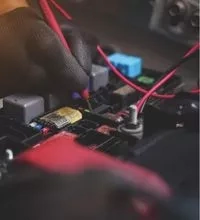Frank Massey: Three step guide to finding faults
In this article: In part three of Frank Massey's story, he explains how a more methodical, multi-modal approach to fault diagnosis is the best way to work
Evaluating vehicle faults is a highly skilled job. It’s absolutely crucial to clarify the difference between responding to a measured value and offering an opinion based on experience. There can be no excuse for internet-based guesswork; however, we are all human and I will fully admit to leaning on my intuition.
I’m often asked for an opinion relating to a fault and my mind automatically starts to run through my own past repairs to search for clues to the present-day case. Even if I am to pluck a pointer from my memories successfully, I still need accurate and specific information, whether historical, current, or symptom-based. This diagnostic data may be gathered in a variety of ways, often employing multiple measurements conducted simultaneously. The following, simple, three point plan should help you diagnose faults more effectively.
Starting positions
The first port of call when fault diagnosing is often serial evaluation. However, this overlooks a vital fact: serial faults are often caused by mechanical defects, so a visual check often pays dividends. For example, what appears to be a complaint relating to engine throttle response could be caused by mechanical wear on the ABS tone rings, a problem which in turn will affect chassis dynamics. In this case, there may not be any serial diagnostic trouble code errors, as the system is responding to theoretical wheel speed differential, adjusting the throttle to reduce engine torque. Indeed it is best not to rely on serial errors; intermittent or pending faults are often found in adaption or corrective data.
Be less tolerant
Many critical components have, in my opinion, too wide a tolerance regarding look-up tables. Air mass meters, for example, often have range and response errors without any corresponding error codes. The powertrain control module (PCM) compares air mass, throttle position, map, and exhaust gas recirculation (EGR) duty to calculate EGR and fuel load requirements. This often results in an incorrect EGR flow error message.
Having said all this, serial data evaluation can still be invaluable in assessing faults and I'm thoughtful when appraising combustion anomalies. There is of course no substitute for using oscilloscopes when assessing ignition performance - however, a dynamic serial evaluation should consider air-fuel ratio, fuelling correction, ignition angle correction, exit gas temperature, and load values. This will provide valuable data across a wide operating range - and brings me to a more recent change in sensor reporting technology that nullifies conventional measurement techniques: single edge nibble transmission (SENT) data.
SENT is a unidirectional “out only” data package, including sensor values and diagnostics. It employs three wires - power, ground, and sent signal output - with similar characteristics to CAN. SENT, like CAN, FlexRay, and LIN, requires a decoder to evaluate the message values. This data should be logged, so that the technician can evaluate it at a later stage.
Gauge your success
I am passionate about the importance of using gauges when testing fuel priming and turbo performance, but it’s something that should be complemented with relevant serial data. Fuel systems, for example, where changes in volume and flow can occur, will cause cavitation or voids - and these are often undetectable serially.
Experience gained in systems testing over the years directed me to design and build my own specific gauges as those available failed to measure up. This is another skill requirement for technicians: adaptability, both in process and tools used.




